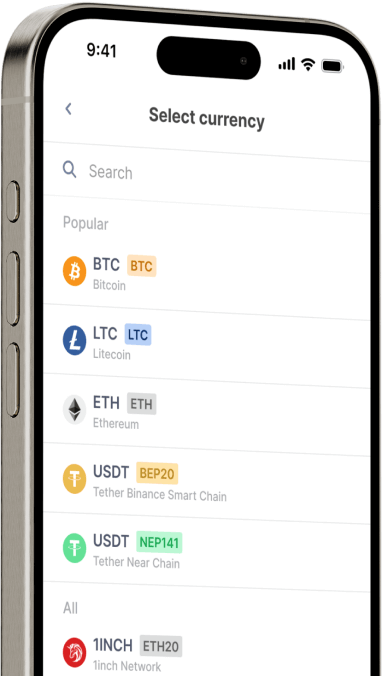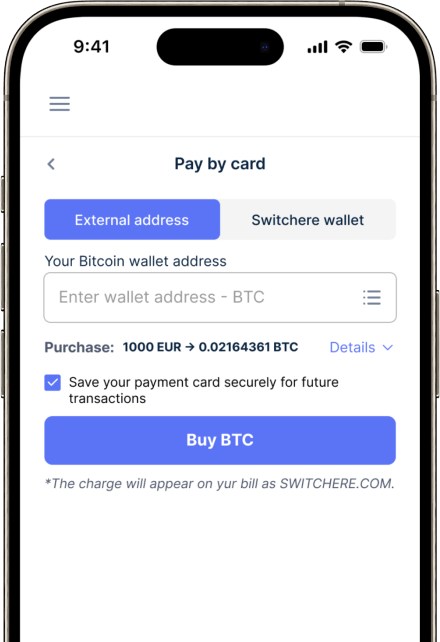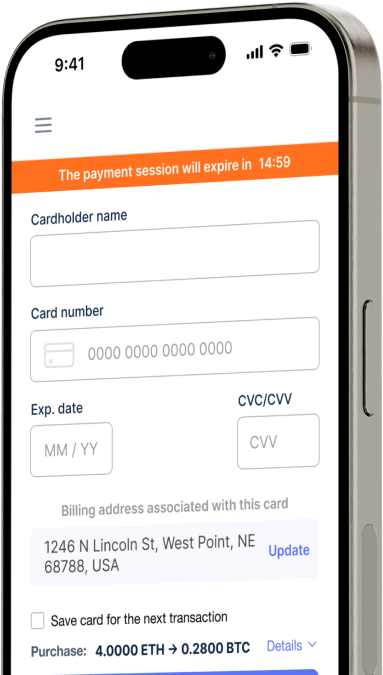Convert
Tunisian dinar (TND) to Chromia (CHR) Instantly
Purchase Chromia (CHR) with Tunisian dinar (TND) easily at Switchere and benefit from fast, secure transactions.
About
Chromia (CHR)
Chromia (CHR) is a relational blockchain platform designed to enable a new generation of decentralized applications (dApps) by addressing the scalability, data handling, and developer experience challenges prevalent in earlier blockchain infrastructures. Unlike traditional smart contract platforms that use a virtual machine, Chromia integrates the security of a blockchain with the flexibility and efficiency of a relational database. This unique architecture, built on the Postchain framework, allows for more complex data structures and queries to be managed directly on-chain, making it a highly suitable Web3 infrastructure for data-intensive applications like enterprise systems, social media, and advanced gaming.
The core of Chromia's innovation lies in its custom programming language, Rell, which is designed to be highly secure and easy for developers familiar with SQL to learn. This focus on a developer-friendly environment aims to accelerate the creation of sophisticated dApps. The network operates on a Byzantine Fault Tolerance (BFT) consensus mechanism, with dApps running on their own dedicated sidechains, ensuring high throughput and low latency. The native utility token, CHR, is central to the ecosystem's tokenomics. It is used by dApps to pay for hosting fees, staked by node providers to guarantee security, and acts as a standard currency within the Chromia digital asset economy.
Buy Other 150+ Cryptocurrencies for Tunisian dinar (TND)
Other Coins for Tunisian dinar (TND)
-
TND to ZRX
-
TND to 1INCH
-
TND to AAVE
-
TND to ACH
-
TND to ALGO
-
TND to TLM
-
TND to ANKR
-
TND to APE
-
TND to NFT
-
TND to API3
-
TND to APT
-
TND to ARPA
-
TND to AUDIO
-
TND to AVAX
-
TND to AVAX
-
TND to AXS
-
TND to BADGER
-
TND to BAL
-
TND to BNT
-
TND to BAT
-
TND to BNB
-
TND to BSW
-
TND to BSV
-
TND to BLUR
-
TND to BONE
-
TND to CTSI
-
TND to CELR
-
TND to CELO
-
TND to CEL
-
TND to LINK
-
TND to CHZ
-
TND to CHR
-
TND to C98
-
TND to COMP
-
TND to CFX
-
TND to PEOPLE
-
TND to CVX
-
TND to ATOM
-
TND to CTC
-
TND to CRV
-
TND to DAI
-
TND to DASH
-
TND to MANA
-
TND to DENT
-
TND to DGB
-
TND to DYDX
-
TND to XEC
-
TND to EOS
-
TND to ETC
-
TND to ENS
-
TND to ETHW
-
TND to FET
-
TND to FIL
-
TND to FLOKI
-
TND to GALA
-
TND to GNO
-
TND to ONE
-
TND to HBAR
-
TND to HOT
-
TND to HOOK
-
TND to ICX
-
TND to ILV
-
TND to IMX
-
TND to INJ
-
TND to ICP
-
TND to IOST
-
TND to IOTX
-
TND to JASMY
-
TND to JST
-
TND to KAVA
-
TND to KCS
-
TND to KSM
-
TND to KNC
-
TND to LDO
-
TND to LQTY
-
TND to LPT
-
TND to LOOKS
-
TND to LRC
-
TND to LUNA
-
TND to MKR
-
TND to MASK
-
TND to EGLD
-
TND to ALICE
-
TND to NEAR
-
TND to XEM
-
TND to NEXO
-
TND to NOT
-
TND to NMR
-
TND to OKB
-
TND to OMG
-
TND to ONT
-
TND to EDU
-
TND to OP
-
TND to OGN
-
TND to CAKE
-
TND to PAXG
-
TND to PENDLE
-
TND to DOT
-
TND to POL
-
TND to QTUM
-
TND to QNT
-
TND to RDNT
-
TND to XRD
-
TND to RVN
-
TND to REN
-
TND to RSR
-
TND to RLC
-
TND to RPL
-
TND to SFP
-
TND to SHIB
-
TND to SKL
-
TND to SXP
-
TND to STND
-
TND to STG
-
TND to XLM
-
TND to GMT
-
TND to STORJ
-
TND to STMX
-
TND to SUSHI
-
TND to SNX
-
TND to USDT (Polygon)
-
TND to USDT (AVAC)
-
TND to USDT (BEP20)
-
TND to USDT (ERC20)
-
TND to USDT (SPL)
-
TND to USDT (NEP141)
-
TND to USDT (FA2)
-
TND to USDT (TRC20)
-
TND to USDT (JETTON)
-
TND to XTZ
-
TND to GRT
-
TND to SAND
-
TND to TFUEL
-
TND to THETA
-
TND to RUNE
-
TND to TON
-
TND to TUSD (BEP20)
-
TND to TUSD (TRC20)
-
TND to TWT
-
TND to UOS
-
TND to UMA
-
TND to UNI
-
TND to USDC (Polygon)
-
TND to USDC (SPL)
-
TND to USDC (OP)
-
TND to USDC (BEP20)
-
TND to USDC (AVAC)
-
TND to USDC (ARB)
-
TND to USDC (ERC20)
-
TND to VET
-
TND to VRA
-
TND to WAXP
-
TND to WOO
-
TND to WLD
-
TND to WBTC
-
TND to WMINIMA
-
TND to XDC
-
TND to YFI
-
TND to YGG
-
TND to ZIL
How to Buy Chromia (CHR)
Frequently Asked Questions
-
What is the TND to CHR trading pair and why is it uncommon?
The TND/CHR pair represents the exchange rate between the Tunisian Dinar and Chromia's native token, CHR. However, a direct TND/CHR market is highly uncommon on most cryptocurrency exchanges due to low liquidity. Typically, users must perform a two-step process: first, convert TND to a more liquid asset like USDT or BTC on a peer-to-peer (P2P) platform using a local bank transfer, and then trade that asset for CHR on a global exchange that lists the Chromia token.
-
What technical features make Chromia (CHR) a notable blockchain project?
Chromia is distinguished by its unique relational blockchain architecture, which blends the efficiency and flexibility of a relational database with the security of a blockchain. It utilizes a custom programming language called 'Rell,' which is designed for developers to create complex decentralized applications (dApps) more efficiently. This technology, part of its Postchain framework, is particularly well-suited for on-chain gaming and scalable enterprise solutions.
-
How can I securely store my Chromia (CHR) after the transaction?
After acquiring CHR on an exchange, it is a critical security best practice to move your digital assets to a personal, non-custodial digital wallet. This gives you full control over your private keys. You can use wallets that support ERC-20 tokens if you hold the Ethereum version of CHR, or a native wallet compatible with the Chromia blockchain. Always enable two-factor authentication (2FA) on your exchange account for added protection.
-
What are the primary methods for converting Tunisian Dinar to Chromia (CHR)?
The most common method involves using a P2P platform as a fiat on-ramp. Users in Tunisia can buy stablecoins (like USDT) with TND from verified merchants. Once the stablecoin is in your digital wallet, you transfer it to a major cryptocurrency exchange. On that exchange, you can access the highly liquid USDT/CHR order book to execute the final trade for Chromia's digital asset.
-
What should I know about KYC compliance when purchasing crypto with TND?
When using a TND fiat gateway, whether a P2P service or a local exchange, you will almost certainly need to complete a Know Your Customer (KYC) process. This involves verifying your identity with official documents to comply with Anti-Money Laundering (AML) regulations. This is a standard security procedure for any platform that facilitates blockchain transactions originating from fiat currency.
-
Why is it strategic to trade via a high-volume pair like USDT/CHR instead of looking for a direct TND/CHR pair?
Trading through a high-volume pair like USDT/CHR provides access to deep liquidity and a tight bid-ask spread, ensuring you get a fairer market price and your trade executes quickly. A direct TND/CHR pair would suffer from low trading volume, leading to high slippage—where the price you pay is significantly different from the price you expected. Using an intermediary asset like USDT is the most efficient and cost-effective secure trading strategy.




